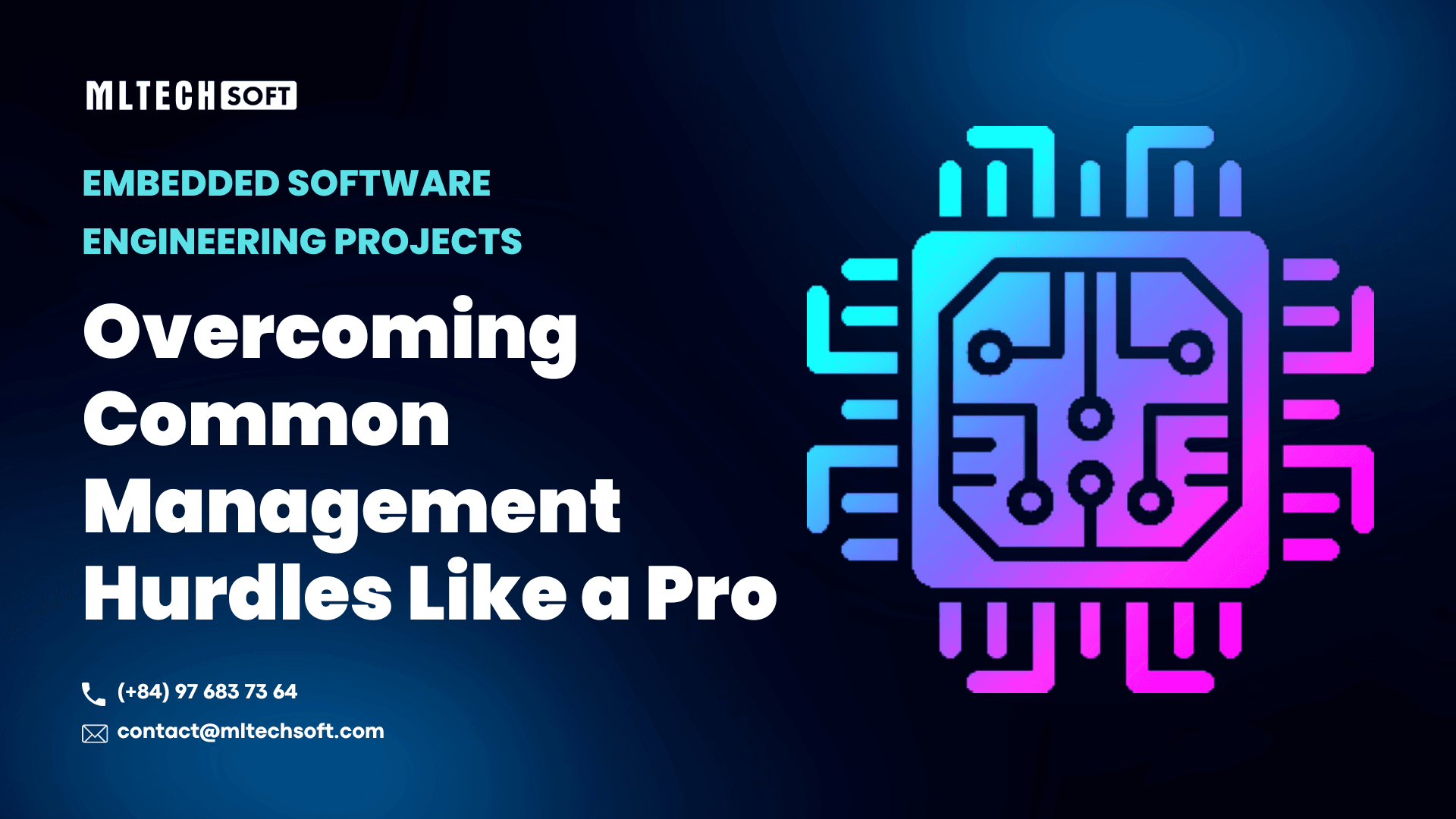Scroll down for more
Embedded Software Engineering Projects: Management Hurdles

Embedded software is a component that is 'embedded' into hardware to control various functions of devices and systems. Nowadays, embedded software has become familiar, from simple consumer electronics to complex applications.
The more convenient, the more complex it is to operate a project on embedded software, which comes with many hurdles. Overcoming these management challenges is crucial to ensuring project success and delivering efficient software solutions.
1. A brief introduction to Embedded Software Engineering
What is Embedded Software Engineering?
Embedded Software Engineering is the process of designing and coding the programs that run these embedded systems. It also requires an understanding of the hardware mechanics and how the software and hardware should interact to control and enable the functionalities.

Benefits of Embedded Software Engineering
Embedded Software Engineering makes valuable contributions to various industries with several benefits:
- Specializing features and capabilities to meet specific requirements of the hardware
- Optimizing to work within the resource limitations of the hardware
- Ensuring timely and predictable responses (for applications like automotive control and industrial automation)
- Greater stability and reliability
- Preventing accidents and ensuring user safety for safety-critical applications
- Lowering latency in processing tasks
- Remaining stable for extended periods, reduces the need for frequent updates and maintenance
- More difficult for unauthorized access and attacks
- Integration of new technologies, sensors, and features; driving innovation in various fields
- Enabling devices to communicate, share data, and interact with each other and the cloud
Examples
There are some examples where embedded software is used:
- Appliances like dryers, clothes washers, refrigerators, microwaves, smart TVs, smartphones, home security systems, etc
- Bluetooth speakers/earphones
- Modern automobiles include climate control, active suspension, power management, and engine and transmission control
- Medical devices like pacemakers, insulin pumps, blood glucose monitors, etc
- Avionics systems in airplanes, including flight control and navigation systems
- Software for IoT devices that require communication and interaction with other devices and networks
2. Challenges in Embedded Software-based System Project Management
Rapid and unpredictable market changes
Rapid market changes can lead to many challenges when managing an embedded software-based system project, such as shortening product lifecycles, increasing demands from clients, and at the same time creating a more competitive market. This hurdle requires regular adjustments to software features and functionalities.
High equipment and prototyping costs
It is costly to develop and maintain high-fidelity prototypes, which create an accurate emulation of the final product. The high cost of specific hardware components and prototyping may lead to overbudget spending.

Mechanical and process complexity
The Embedded Software Engineering process requires high-professional engineers' expertise in both software engineering and hardware design to make sure the technical components are compatible and function smoothly.
Resource limitations
There are some resource limitations when operating embedded software engineering projects, such as time, budget, talents, tools, data storage, etc. This has a significant impact on project outcomes, timelines, and overall success.
3. Ways to Address Project Management Hurdles
Stay updated with the latest industry trends
Staying up-to-date is mandatory to remain competitive in the field. You can collect information through various platforms like news, surveys, research, industry reports, etc. Some sites you should explore:
Encourage communication between team and clients
Effective communication ensures that your team aligns with clients' changing requirements and technical expectations. This minimizes misunderstandings between the development team and the client, which lead to project delays or failures.
Establish partnerships with embedded expertise vendors
Seeking partnerships with vendors with embedded expertise can raise the chances of receiving discounts, preferential prices, and extra services such as setting up or maintenance services. It could be hardware suppliers, tool providers, research institutions, and more. This approach lowers the cost and avoids over-budget spending.

Implement management software to streamline data
Management software provides visualizations, status updates, and streamlines data to keep the team aligned. Some tools also have features that track code changes, software defects, issues, and enhancements. Some common management tools for embedded software engineering projects:
Third-party outsourcing
It's time to consider outsourcing to a third party when you need expertise, manage workloads, or deal with resource constraints. Outsourcing specialized teams with knowledge and experience can speed up the project and ensure quality results.
Conclusion
Success in managing an embedded software engineering project requires a strategic approach to address common hurdles, which not only navigates complexity but turns it into an opportunity for innovation. If you consider a third party for your project, MLTech Soft will be a great choice with our tech expert team!
Get our blog
Want the latest and greatest from our blog straight to your inbox? Chunk us your details and get a sweet weekly email.
Read more in our blog

Project Management
The Rise of AI-Generated Code: Opportunities & ChallengesExplore how AI-generated code is transforming programming with tools like GitHub Copilot and AlphaCode. Learn about the opportunities it offers—faster development, accessibility—and the challenges like security and ethics we must address.

Project Management
The Impact of Dynamic Pricing on Customer BehaviorExplore the impact of dynamic pricing on customer behavior and learn how to implement effective pricing strategies.

Project Management
Focus in Scrum: Keeping Your Team on TrackDiscover effective strategies to maintain focus within your Scrum team, overcome common challenges, and boost productivity.
MLTECH SOFT